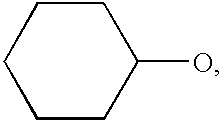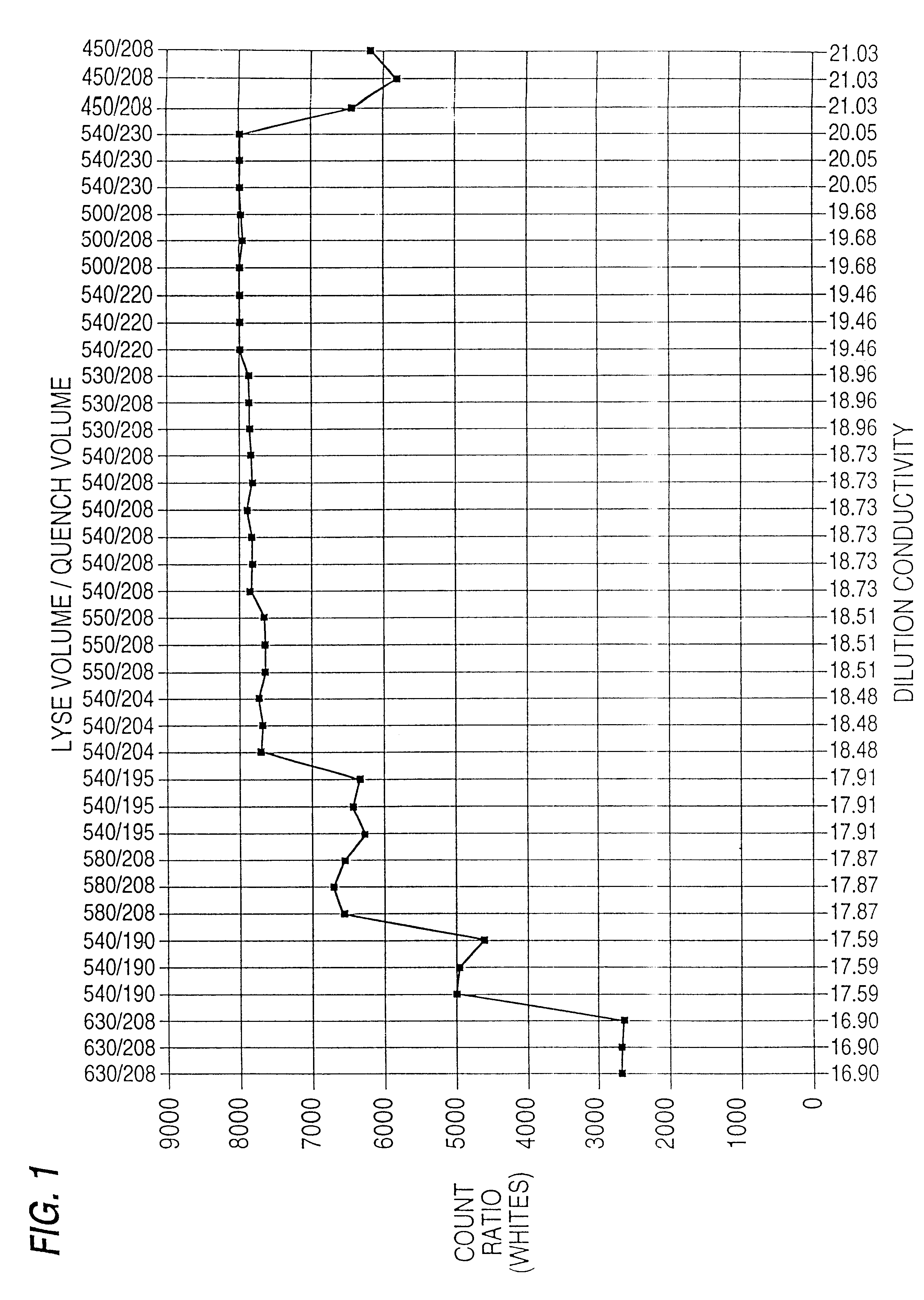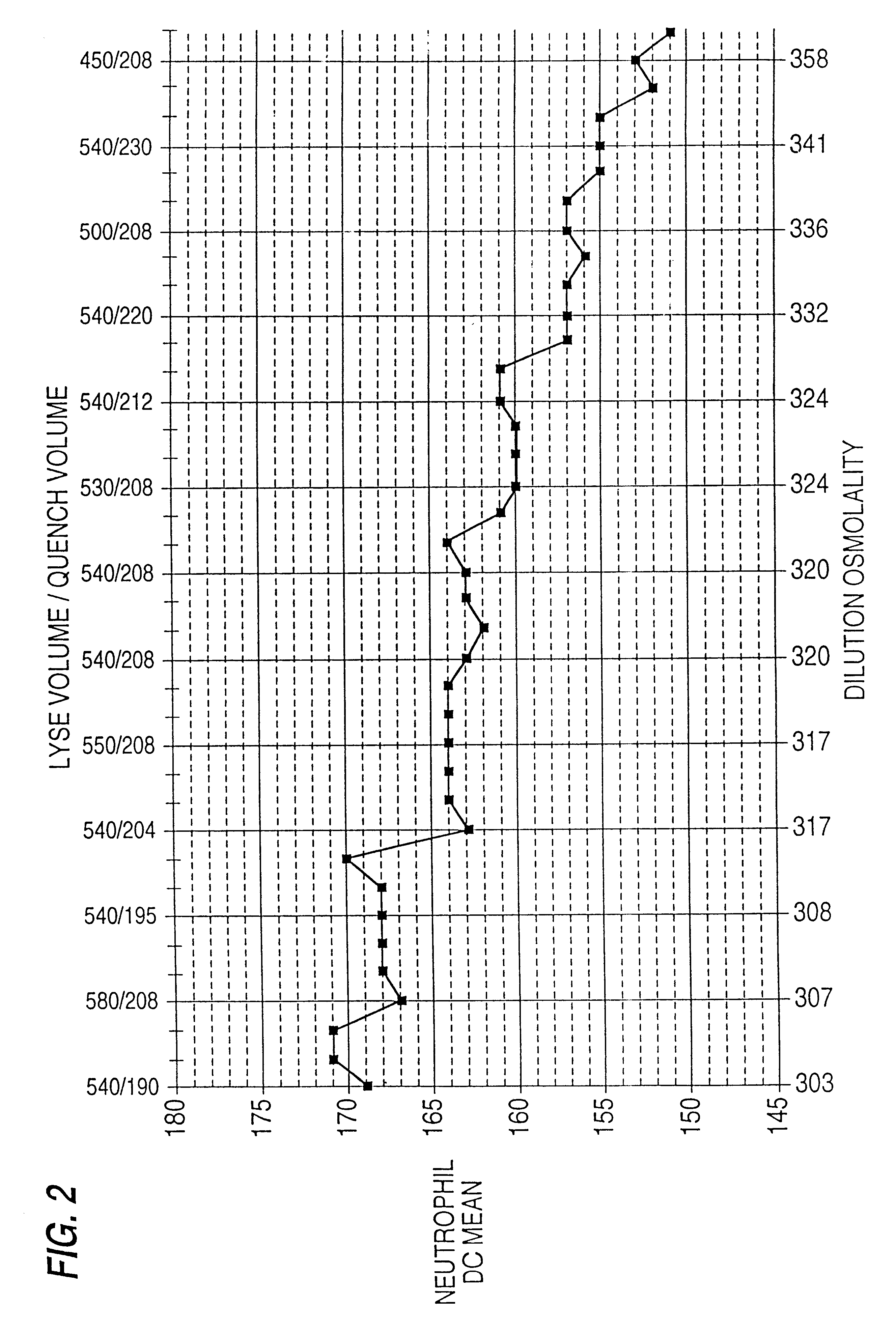Quality control method
- Summary
- Abstract
- Description
- Claims
- Application Information
AI Technical Summary
Benefits of technology
Problems solved by technology
Method used
Image
Examples
example 1
Lymphocyte Analog from Goose Red Blood Cells
The following is a specific example of preferred reagents and recommended specific procedural steps for treating goose red blood cells to obtain a normal sized lymphocyte analog. It will be understood that the formulations and the procedures only are illustrative and that other ingredients, proportions and procedures can be employed, in accordance with the disclosures in this invention.
Phosphate Buffered Saline Solution (PBS) Liter Formulation
1. Sodium phosphate monobasic: 0.2 g
2. Sodium phosphate dibasic.7H.sub.2 O: 2.0 g
4. Sodium chloride: 9.4 g
5. q.s. to 1 liter with distilled water: pH approximately 7.4; osmolality 315 to 345 mOsm / kg.
Lymphocyte Hypotonic Solution
1. Sodium phosphate monobasic: 0.2 g
2. Sodium phosphate dibasic.7H.sub.2 O: 2.0 g
3. q.s. to 1 liter with distilled water: pH approximately 7.8; osmolality 15 to 25 mOsm / kg.
Procedure
1. Select avian red blood cells having a mean cell volume range of about 14...
example 2
Monocyte Cell Analog from Alligator Red Blood Cells
The following is a specific example of preferred reagents and recommended specific procedural steps for treating alligator red blood cells to obtain the monocyte cell analog. It will be understood that the formulations and the procedures are only illustrative and that other ingredients, proportions and procedures may be employed, in accordance with the disclosures in this invention.
Monocyte Hypotonic Solution
1. Sodium phosphate monobasic: 0.1 g
2. Sodium phosphate dibasic 1.0 g
3. q.s. to 1 liter with distilled water; pH approximately 7.8; osmolality 5 to 15 mOsm / kg.
Washing solution for cells (PBS), as set forth in Example 1.
Procedure
1. Select alligator red blood cells having a mean cell volume range of about 350 to 450 fL. Wash the packed alligator red blood cells with PBS.
2. Add 1.0 to 5.0 milligrams of cholesterol to a cell count of 1.times.10.sup.6 per microliter and incubate 3 to 5 hours at room temperature.
3. Prepare a glutarald...
example 3
Eosinophil Analog from Red Blood Cells of the Alligator
The following is a specific example of preferred reagents and recommended specific procedural steps for treating red blood cells of the alligator to obtain the eosinophil analog. It will be understood that the formulations and the procedures are only illustrative, and that other ingredients, proportions and procedures may be employed, in accordance with the disclosures in this invention.
Eosinophil Hypotonic Solution
1. Sodium phosphate monobasic: 0.32 grams
2. Sodium phosphate dibasic 8.08 grams
3. q.s. to 1 liter with distilled water; pH approximately 8.0; osmolality 75 to 85 mOsm / kg.
Eosinophil Hemoglobin Denaturing Treatment Solution
1. dimethyldicocoammonium chloride 2.5 grams
2. tris(hydroxymethyl)amino methane 6.06 grams (organic buffer)
3. q.s. to 1 liter with distilled water: pH approximately 10.5.
Eosinophil Post-Treatment Wash Solution
1. polyoxethylated alkylphenol 5 grams (Diazopan.RTM. SS-837 by GAF Chemical Corp.)
2. q.s. to...
PUM
 Login to View More
Login to View More Abstract
Description
Claims
Application Information
 Login to View More
Login to View More - R&D
- Intellectual Property
- Life Sciences
- Materials
- Tech Scout
- Unparalleled Data Quality
- Higher Quality Content
- 60% Fewer Hallucinations
Browse by: Latest US Patents, China's latest patents, Technical Efficacy Thesaurus, Application Domain, Technology Topic, Popular Technical Reports.
© 2025 PatSnap. All rights reserved.Legal|Privacy policy|Modern Slavery Act Transparency Statement|Sitemap|About US| Contact US: help@patsnap.com



